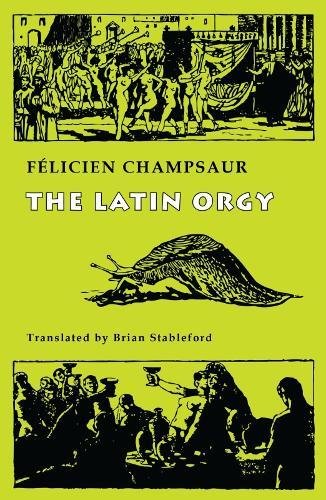The Latin Orgy
L’Orgie Latine was originally published in 1904. In this new edition, translated for the first time into English by Brian Stableford, readers are transported to the Roman Empire when Messalina was Empress. Messalina, as a young woman (possibly in her teens), married Claudius, who would have been in his late 40s before he became Emperor. Champsaur’s novel takes place, most likely, in 48 AD, the same year Messalina was executed, likely for treason. Her history has been told by Tacitus and Suetonius, though was portrayed under an air of debauchery that had probably had more to do with political bias than anything based in fact. Later, Pliny the Elder and Juvenal took up the story and ran with it, and Messalina continues to be portrayed as a prostitute.
Champsaur captures what it would have been like to live during the Roman Empire. A great deal of attention is spent on gladiatorial events, making the reader feel close enough to smell the arena after the starved animals had been released. In this well-researched account, Stableford includes footnotes throughout his text, translating some of the Latin terms as well as clarifying confusions in Champsaur’s text. While Champsaur’s approach to Messalina’s story was not unlike the negative portrayal of the men who wrote about her before him, it seems he tried to capture the personality of the woman to help the reader understand her more than history has allowed. The chapters are almost all extremely short, which makes reading this book feel at times disjointed, but lends itself well to being read quickly and captures the melodrama perfectly.










